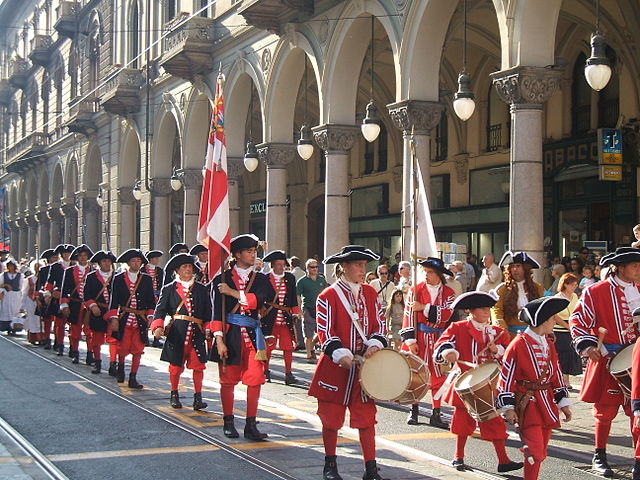The siege of Turin took place from June to September 1706, during the War of the Spanish Succession. A French army led by Louis de la Feuillade besieged the Savoyard capital of Turin, whose relief by Prince Eugene of Savoy has been called the most brilliant campaign of the war in Italy. The siege is also famous for the death of Piedmontese hero Pietro Micca.
The Allied relief force breaks the French lines, lifting the siege of Turin
Pietro Micca, Pietro Micca, by Andrea Gastaldi 1858; in the 19th century, he became a symbol of Italian patriotism
Annual parade in Turin commemorating the siege
War of the Spanish Succession
The War of the Spanish Succession was a European great power conflict fought between 1701 and 1714. The immediate cause was the death of the childless Charles II of Spain in November 1700, which led to a struggle for control of the Spanish Empire. His nominated heir was Philip of Anjou, a grandson of Louis XIV of France, whose main backers were France and most of Spain. His rival, Archduke Charles of Austria, was supported by the Grand Alliance, whose primary members included the Holy Roman Empire, the Dutch Republic, and Great Britain. Significant related conflicts include the 1700 to 1721 Great Northern War, and Queen Anne's War in North America.
Clockwise, from top left: Battle of Blenheim (13 August 1704) Battle of Ramillies (23 May 1706) Battle of Almansa (25 April 1707) Battle of Denain (24 July 1712)
Charles II, 1665–1700, last Habsburg King of Spain
Proclamation of Philip of Anjou as Philip V of Spain, Versailles, 16 November 1700
Francis Rákóczi, leader of the 1703–1711 Hungarian revolt; funded by France, this was a major distraction for Austria







